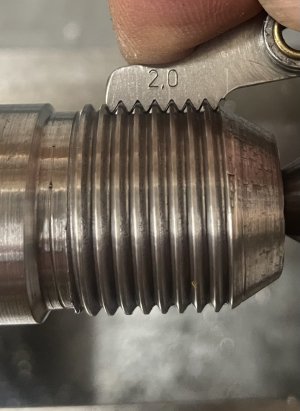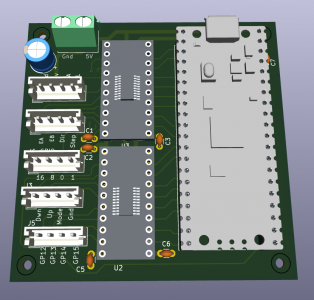- Joined
- Dec 18, 2019
- Messages
- 6,463
That's the basic idea, but there's slightly more to it, from my understanding. But as long as you make sure that you recover the same spindle location and lead screw index (angle) it should work. Remember that the relationship between metric and imperial is not quite a simple fraction, unless I suppose you use 254/10, so you need to make sure you exactly line up, or the thread won't be exact. I haven't sat down to do the math yet - it's on my to do list.



